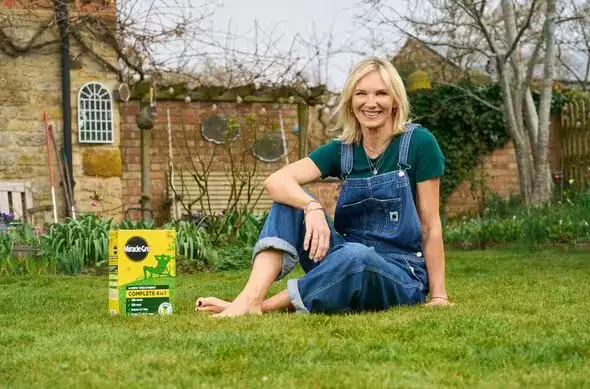Workplace Stress and the Power of Touching Grass
A recent survey of 2,000 employed adults highlights the growing impact of workplace stress, leaving many unable to fully unwind after work. From demanding colleagues and tight deadlines to excessive workloads, a staggering 79% of employees expressed the need for downtime before they can enjoy their evenings, with an average destress time of 25 minutes. Beyond looming deadlines, other major stressors include technical issues and workplace politics.
The Toll of Workplace Stress
- 32% of employees report experiencing stress at work “most days.”
- 40% find themselves thinking about work even after they get home.
To combat this stress, employees turn to various relaxation methods, such as enjoying a glass of wine or beer, unwinding in the garden, or watching their favorite TV shows. However, Miracle-Gro, in partnership with presenter and gardening enthusiast Jo Whiley, is championing a natural alternative: the ‘Touching Grass’ trend.
Reconnecting with Nature: A Simple Yet Effective Remedy
Recognizing the challenges of workplace burnout, Miracle-Gro is on a mission to encourage employees to reconnect with nature as a way to relieve stress. The ‘Touching Grass’ trend promotes outdoor activities that allow individuals to disconnect from technology and reduce stress naturally.
Jo Whiley, an advocate for gardening, believes this simple practice can be transformative. “All the stresses melt away when you’re in the garden,” she shares. “Touching grass isn’t just a passing fad; it’s a powerful way to unwind.”
Experts also emphasize the benefits of nature on mental and emotional well-being. RHS Therapeutic Gardener Ozichi Brewster explains, “Spending time outdoors, touching grass, and getting natural light all have a long list of healing effects. They help release the four feel-good hormones—dopamine, serotonin, endorphins, and oxytocin—boosting energy and promoting relaxation.”
Easy Ways to Embrace the ‘Touching Grass’ Trend
You don’t need a large garden to reap the benefits of nature. Jo Whiley suggests simple ways to incorporate this practice into daily life:
- Nurture a window box or indoor plants
- Grow a small herb garden in pots
- Walk barefoot on soft grass
- Take a leisurely stroll in a local park
- Relax outdoors on a lawn or balcony, enjoying the fresh air and sunlight
Nearly 29% of survey respondents actively seek out nature—grass, trees, flowers, and water—to enhance their mood. Soft grass was cited as the most therapeutic natural texture by 42% of participants, who associated it with feelings of calm and peace.
Spending time outside isn’t just physically grounding; it offers a mental reset. Whether it’s feeling soil under your fingertips or pausing to appreciate greenery, reconnecting with nature is a powerful antidote to modern stress.
A spokesperson for Miracle-Gro stated: “We want to encourage people to reconnect with nature by ‘touching grass.’ Now that spring has officially arrived, it’s the perfect time to start tending to your garden and lawn.”
Frequently Asked Questions –
What is the ‘Touching Grass’ trend?
The ‘Touching Grass’ trend encourages people to step outside, connect with nature, and reduce stress by spending time in green spaces. Activities can range from gardening and walking barefoot on grass to simply relaxing outdoors.
How does touching grass help reduce stress?
Being in nature triggers the release of feel-good hormones like dopamine, serotonin, endorphins, and oxytocin. This helps boost mood, promote relaxation, and reduce stress levels.
Do I need a garden to participate in the trend?
No, you don’t need a garden! You can nurture indoor plants, cultivate a herb garden, visit a local park, or simply enjoy a moment outdoors on your balcony or lawn.
Can touching grass improve mental health?
Yes! Studies show that exposure to nature improves mental clarity, reduces anxiety, and enhances overall well-being. Even small interactions with green spaces can have a positive impact.
How can I incorporate more nature into my daily routine?
5. How can I incorporate more nature into my daily routine?
Start small—spend a few minutes outside each day, grow plants at home, or take breaks in a nearby park. Prioritizing time outdoors can lead to long-term benefits for both physical and mental health.











Leave a Reply